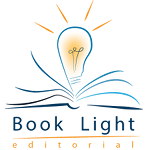Thanks to our voters, December's theme was “Pros and Cons of Points of View (POV).”
First Person POV (I, me) Pros:
- Automatically a deeper POV because we're directly in the MC’s (Main Character’s) head.
- It may be an easier starting point for newer writers since it’s how we talk about our life in the day-to-day.
- It keeps us focused on the MC.
First Person POV Cons:
- We only get to know the MC’s thoughts, feelings, and physical reactions—nobody else’s—and we only know what they know.
- We only get the MC’s side of the story, which means it’s more than a little biased—whether they’re the hero, the anti-hero, or even the villain, we sympathize with them.
- Describing your MC’s appearance is a lot harder in First Person—avoid the looking in the mirror cliché!
Second Person POV (you, your) Pros:
- Your reader jumps immediately into action with the “you” pronouns, as they are now a part of it (like with the Choose Your Own Adventure series)!
- Second Person can work well for non-fiction works and is often used there.
Second Person Cons:
- It's incredibly difficult to carry an entire fiction novel in Second Person. There aren’t many that’ve done it for the full length of it and done so well-crafted.
- It requires some serious suspension of disbelief from the reader that they are part of the story.
- It can also start feeling repetitive after a while if not done well.
And now to third person POV (she/he/they/it, her/his/their/its). There are three types of third person POV: third person omniscient, third person limited omniscient (AKA close third), and third person objective (AKA dramatic POV). We’ll break down pros and cons for each below!
Third Person Omniscient Pros:
- This is the know-it-all POV. The narrator knows everything about everything, including the characters. It's the wide angle shot of the whole battle in a movie.
- Readers can learn about things well before the protagonist.
- Third person omniscient is another that can work well in non-fiction too as the writer is presumably an expert in what they're sharing.
Third Person Omniscient Cons:
- Market-wise, it might be harder to sell these days in traditional and indie publishing (not impossible, but harder) because these are often epic tales.
- It creates some serious distance between the reader and the characters (this is actually a challenge for all third person POVs, but particularly in this one) as the narrator is literally above the characters in their god-like role.
Third Person Limited Omniscient Pros:
- We have a focal character in this POV and we’re limited to what they are experiencing, thinking, etc. so we can still get a sense of who they are even if we aren't directly in their head, but you can also switch between perspective characters.
- The MC can keep secrets from the reader and build up tension and suspense that way.
Third Person Limited Omniscient Cons:
- Since the narrator is outside of the MC, we’re still at a greater distance than we would be as compared to First Person POV, you'll have to work a little harder to deepen that POV.
- Watch out for those filter words like telling us your character “noticed,” “wondered,” etc. throughout the story, it’s easy to do on accident in Third Person Limited.
- Readers might think a character's perspective and perceptions are the author's.
Third Person Objective Pros:
- The reader is the ultimate interpreter of characters’ emotions, as the narrator only gives us the external actions and responses of the characters. This is the ultimate showing narrative, no telling allowed!
- This could be an effective way to build suspense since we never know what a character is thinking
Third Person Objective Cons:
- This POV is not really common in modern writing, so it may be harder for readers to connect.
- Since we’re never inside anyone’s head, it’s incredibly distanced—we’re the scientist observing the rat in the maze.
- Similarly to Second Person, voice in this POV may become dry to the reader if not executed well.
Writers may mix it up in their novels and use more than one of these POVs. The most important rule for doing this is consistency throughout the chapter or section with each POV so that you do not lose the reader, either in connection to the character or through confusion of what is going on within the story. It’s helpful to figure out which POV you’re going to use before you write, or at least very early in the story to save yourself the trouble of going back and fixing it through editing. It will save you a lot of time (and headaches) to decide on POV right from the get-go.
Thanks for joining us, we hope you enjoyed the post!

